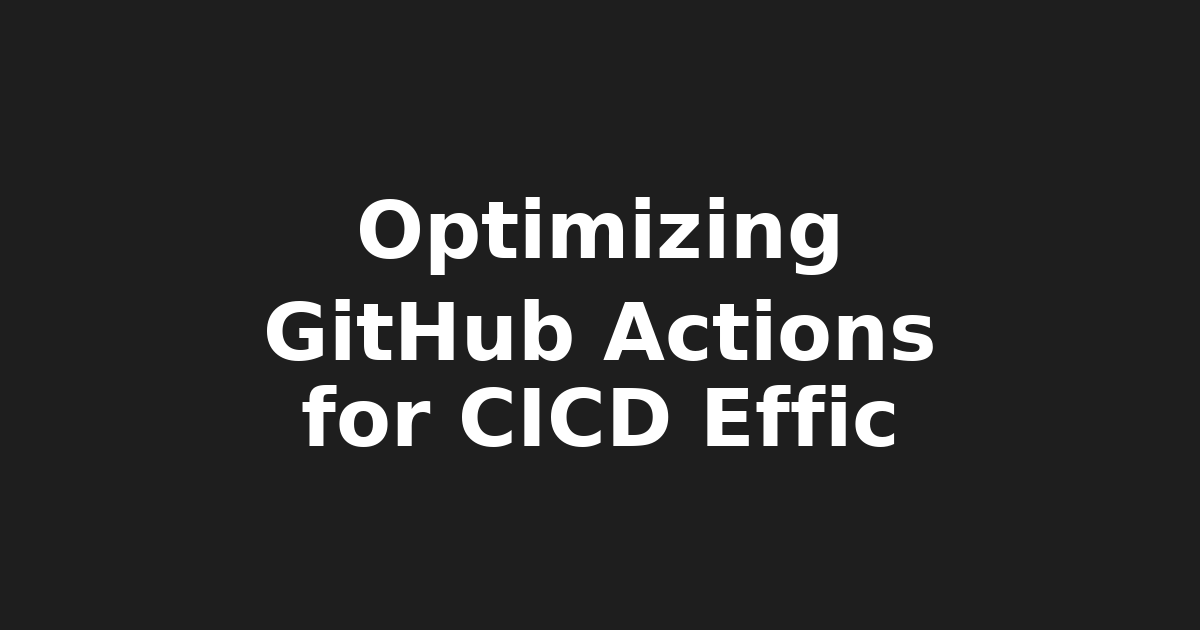Optimizing CI/CD with GitHub Actions: Boost Efficiency in Modern Dev Workflows

🌐 Streamline Your DevOps with GitHub Actions: A Guide for Tech Enthusiasts! 🚀
Hey there, fellow tech enthusiasts! It's your pal Josh from KeepItTechie back again, diving into the fascinating world of software development workflows. Today, we're going to take a closer look at a tool that has been causing quite a stir among developers - GitHub Actions. If you've been looking for ways to optimize your Continuous Integration (CI) and Continuous Deployment (CD) pipelines, you're in the right place! 🔍
First off, let's define our terms. CI/CD is a software development practice where code changes are built, tested, and deployed automatically. GitHub Actions is a powerful feature provided by GitHub that lets you automate your workflows directly in your repository. It's like having your very own digital assistant for streamlining devops tasks! 🤖
🔥 Advantages of Using GitHub Actions 💻
- Integration with GitHub: Since it's built into the GitHub platform, you can easily manage and monitor your workflows right alongside your code. It also plays nicely with other GitHub features such as issues, pull requests, and project boards.
- Flexibility and Customization: With GitHub Actions, you can define custom runners to meet the specific needs of your projects. This means you're not limited by predefined configurations!
- Scalability: GitHub Actions allows for horizontal scaling, ensuring that even large projects can be managed efficiently without breaking a sweat. 🦾
- Integration with Third-Party Services: With GitHub Actions, you can easily integrate with popular third-party services like AWS, Azure, Docker, and Kubernetes, to name a few. This makes it easy to automate complex workflows without the need for manual intervention.
- Version Control: Like all things GitHub, your workflows are version controlled, ensuring that you can easily track changes and roll back if necessary. 🕰️
🎯 Best Practices for Optimizing GitHub Actions Workflows 🏋️♂️
- Organize Your Workflows: Keep your workflows neat and tidy by using descriptive names and organizing them into folders. This will make it easier to manage and maintain your pipelines over time.
- Use Conditional Statements: Leverage conditional statements to run different jobs based on specific conditions, such as branch or environment. This helps keep your workflows flexible and efficient.
- Take Advantage of Secrets: GitHub Actions allows you to store sensitive information, like API keys, in secrets. This ensures that your secrets are not exposed in your public repositories and are only accessible by authorized users.
- Utilize Workflow Triggers: GitHub Actions supports a variety of workflow triggers, such as push events, pull request events, and schedule triggers. Use these triggers to automate your CI/CD pipelines and save time!
- Monitor Your Workflows: Keep an eye on the status of your workflows using GitHub's built-in monitoring tools. If you encounter any issues, use the logs provided by GitHub Actions to troubleshoot and resolve them quickly. 🕵️♂️
🔑 Takeaways for Your Development Journey 💪
- GitHub Actions is a powerful tool for automating CI/CD workflows, offering flexibility, scalability, and easy integration with third-party services.
- By following best practices like organizing your workflows, using conditional statements, leveraging secrets, utilizing workflow triggers, and monitoring your workflows, you can optimize your development process and accelerate project delivery. 🚀
So there you have it, folks! With GitHub Actions in your toolkit, you're well on your way to streamlining your devops tasks and staying ahead of the game in today's fast-paced software development landscape. Keep learning, keep growing, and as always, if you have any questions or need some tech guidance, remember that I'm here for you! 😊
Happy coding! -Josh from KeepItTechie 💻🖥️☕️
🙋♂️ This post was brought to you by Josh from KeepItTechie — helping you break into tech, one command at a time.
